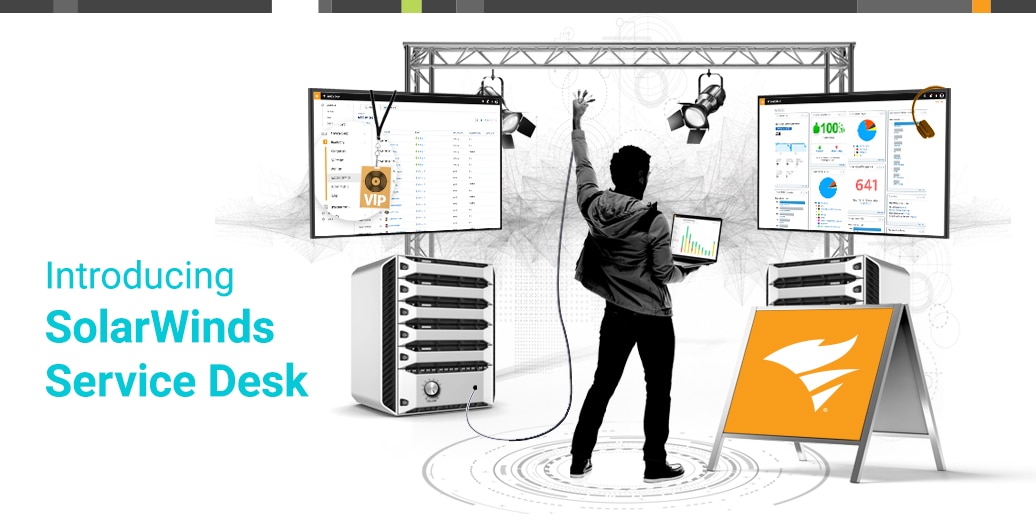Most help desk professionals report on a plethora of metrics and key performance indicators (KPIs). At any given time, they can find the number of
SLA breaches, cost per ticket, mean time to resolution, number of incidents closed, a breakdown of where incidents were submitted, and a nearly infinite number of other possibilities.
These are all useful in one way or another, but consider the definition of service management. According to ITIL, it is “a set of specialized organizational capabilities for providing value to customers in the form of services.” Customers, or in this case, your employees, are the reason the service desk exists in the first place. As modern technology opens new doors for efficiency through automation, machine learning, and artificial intelligence, it’s important to remember that it’s all worthless without a positive customer experience.
As your service desk evolves to incorporate more services and new technology, don’t forget to measure customer satisfaction (CSAT), and don’t ignore the results!
CSAT vs Cost per Ticket
If you’re thinking, “we could have 100% customer satisfaction if we printed money,” your point is a fair one. CSAT and cost per ticket have a positive correlation, which is to say, CSAT increases when you spend more money, and vice versa.
I’m not here to change your IT budget, and while everyone should shoot for 100% satisfaction, smaller improvements might be more realistic depending on your financial wiggle room.
Either way, it’s vital to measure and evaluate customer satisfaction. When organizational leadership can see that IT has taken steps to ensure the highest quality service, it’s easier to evaluate the investment in employee service.
Which leads to the next point: before you spend more money, make sure your processes are focused on delivering customer satisfaction, and that you’re getting a true measurement with a large sample size.
Measuring CSAT Scores
Some organizations use lengthy surveys or studies. Some use one question.
I’d recommend simple, and to the point. Your Uber or Lyft app asks for a number of stars to evaluate a driver. It’s one click, and over a period of time, those responses provide a pretty fair depiction of the general quality of customer experience.
Your service desk could send an automated survey, once every 3-4 closed tickets, asking simply for a thumbs up or a thumbs down.
“Were you satisfied with the support you received?” One click. Done.
You’ll quickly compile a significant sample size to judge the quality of the experience. In addition, you now have an opportunity to follow up on “thumbs down” responses. This will help pinpoint specific issues, and it will indicate to dissatisfied employees that the support team cares about their experience. And remember, if one person experienced a problem, they’re likely not the first or the last person with that experience. Listen to the feedback to improve service delivery.
Improving the Experience
When you follow up with dissatisfied employees, you might hear things like:
“It took a long time to get a response, let alone a solution.”
“I had no idea what the status of my request was.”
“A simple issue took multiple communications to resolve.”
Sure, a larger budget for staff and resources would certainly help all of these issues, but let’s find some other ways to improve service delivery for these types of poor experiences.
If first response times are too long, try automated routing and priority. Rather than sitting in a queue until a technician can diagnose and manually route a ticket, allow your service desk solution to route it based on the type of request or the particular user making the request. If certain users’ requests, or certain keywords (like “outage”) are always “high priority,” make a rule for it. This will help your team respond to everything more quickly, especially the most important tickets and requests.
If visibility is an issue in your service delivery process, create an employee service portal and offer some educational resources on how and why to use it. This way, they’ll always know when there’s an update on their request.
If there are communication breakdowns in your service delivery process, try building a service catalog with dynamic request forms to collect all of the pertinent information up front.
Self-Service: Offer, But Don’t Insist
Self-service can be a valuable resource for some employees. For simple break/fix or account resets especially, I’d recommend creating access to self-service resources. The best way to do that is to connect employees to a knowledge base, accessible through the same employee portal where they submit tickets and requests in the first place. The added benefit is that you can now leverage some of that new technology, using machine learning to actually suggest solutions based on what an employee types into a new ticket.
Of course, some employees just want to create a ticket and wait for support, which is fine. The ultimate goal is a positive experience, so your service delivery processes should be versatile to allow both self-service options and traditional methods for requesting.
By applying some of these methods, you should improve CSAT scores. Make sure you’re constantly measuring in large samples and leveraging all of the tools available to improve the employee experience. Before long, you’ll be delivering the satisfaction your organization deserves at a reasonable cost! 







